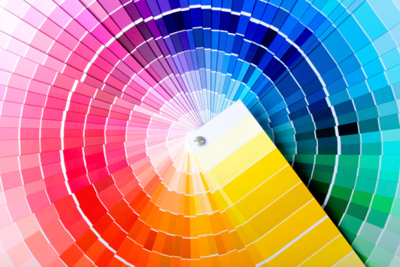
Color is not merely an aesthetic attribute; it is a phenomenon steeped in science, resonating with the fundamental principles of light and heat absorption. As we delve into the confluence of color and thermodynamics, we unveil how colors interact with light — a delicate ballet where wavelengths behave like dancers, some absorbing their surroundings while others reflect the world with resplendent brightness. This intricate relationship raises an insightful question: which color absorbs the most light? To explore this, we will weave through the physics of light, the perceptive aspects of color, and their profound implications on thermal dynamics.
At the core of the interplay between color and light absorption lies the electromagnetic spectrum. The visible spectrum, composed of wavelengths ranging from approximately 380 to 750 nanometers, is the realm where our human eyes dwell. Each color occupies its unique territory within this spectrum, reflecting a distinctive wavelength while absorbing others. For instance, a blue object absorbs all spectral colors except for blue, which is reflected back to our eyes, a phenomenon reminiscent of a selective memory — remembering only that which serves its identity.
When investigating which color absorbs the most light, we transition to the concept of albedo, a measure of reflectivity. Dark colors, particularly black, traditionally claim the title for the most light-absorptive hue. Black is strikingly unique; it is the absence of light, absorbing nearly all wavelengths that strike its surface. This exceptional quality is akin to a vast black hole in the fabric of light, drawing in radiance and consequently, heat. The science behind this is equally intricate. When light waves converge on a black surface, they are absorbed, leading to a transformation of that energy into thermal energy. Hence, black surfaces tend to become significantly warmer than their lighter counterparts when exposed to sunlight.
On the other end of the spectrum, we find white — the epitome of reflectivity. White reflects most wavelengths of visible light, causing it to appear bright and insubstantial, both in color and thermal characteristics. An interesting analogy can be made here: white acts like a protective shield, refracting the assault of heat that accompanies the sun’s rays, much like a serene blanket that keeps a fragile flower cool amidst sweltering heat. Thus, while black hoards warmth, white disperses it, creating a dichotomy that extends beyond mere aesthetics and taps into the very essence of thermal absorption and emissivity.
The intrinsic properties of materials also play a pivotal role in light absorption. Different surfaces interact with light in various ways, influenced by texture, material composition, and environmental conditions. Take asphalt, a prevalent urban surface; it appears black and absorbs an immense quantity of solar radiation. The result? Urban heat islands, where cities experience elevated temperatures compared to surrounding rural areas. Such an effect is not merely an observational quirk; it has tangible consequences for energy consumption, ecological balance, and urban microclimates. The shades of color we choose for our roads and rooftops can significantly influence our immediate environment.
Within the realm of architectural design, the implications of color choice extend even further. Architects and urban planners would be remiss to ignore the scientific principles governing color and heat absorption. By selecting lighter colors for roofing and external walls, energy efficiency can be enhanced, lowering cooling costs during sweltering summer months. A symphony of wisdom unfolds when one considers how nature has orchestrated this balance within its ecosystems: many desert creatures possess light-colored fur or scales, enabling them to thrive under blazing sun without succumbing to the harsh temperatures.
Furthermore, the psychology of color intertwines with this discussion, offering insight into human perception. Warm colors such as red, orange, and yellow evoke feelings of warmth and energy. In contrast, cooler colors like blue and green tend to instill a sense of calmness and serenity. Yet, it is essential to note that these emotional responses parallel the physical properties of these colors in terms of light absorption. While red may inherently absorb more energy than blue, the subjective experience of each color imbues it with a unique appeal — each shade resonates with the beholder’s feelings and experiences. This duality creates an intricate tapestry, melding science with art, where emotional ambiance blends seamlessly with empirical facts.
The realm of color interaction also extends to the domain of technology. Advances in materials science have facilitated the development of pigments and coatings engineered to optimize thermal absorption and reflectivity. Innovations such as solar-reflective coatings harness these principles, providing practical applications for energy conservation in residential and commercial buildings. The future of color in architecture and design is poised on the brink of a revolution, amalgamating the artistry of color with pivotal contributions to sustainability and climate control.
In conclusion, while black emerges as the color that absorbs the most light, its supremacy is integrally tied to various scientific principles, including the properties of the electromagnetic spectrum, material characteristics, and the implications of color psychology. The rich interplay of light, color, and thermal dynamics offers an extensive field awaiting exploration, where even minute choices can yield significant ramifications for energy efficiency and environmental stewardship. As light weaves its intricate patterns through the colorful tapestry of existence, understanding the science behind these hues grants us not just knowledge but the power to shape our surroundings with profound awareness.
